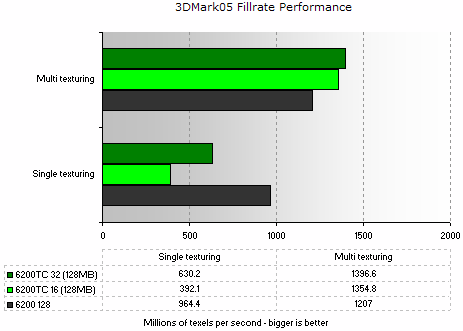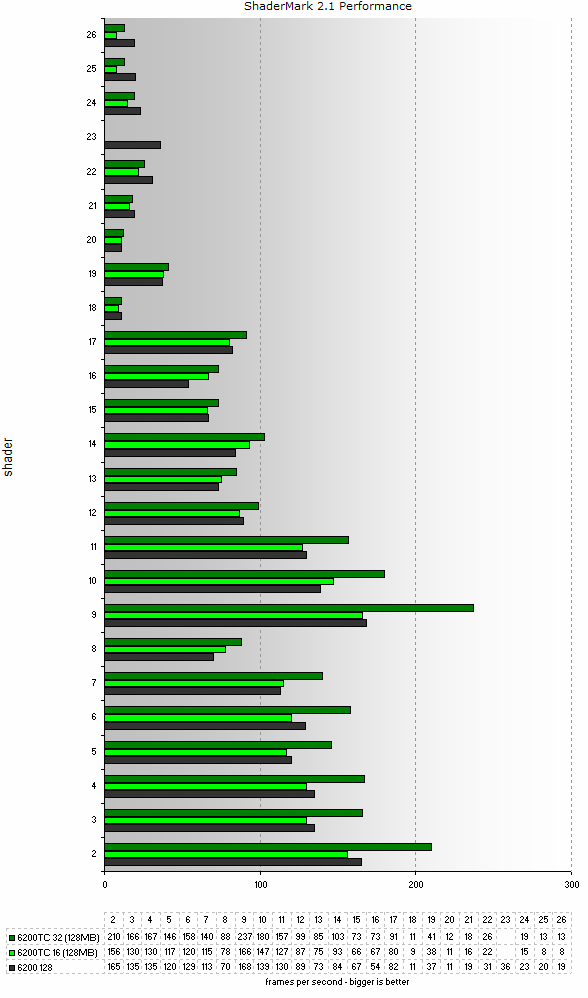Fillrate and ShaderMark 2.1
Fillrate
3DMark05's fillrate tool was used to measure fillrate on all cards.
In the single texturing case, the TurboCache models fall behind due to memory bandwidth pressure. In the more common multi-texture case, 3DMark05 measures the TurboCache models, clocked 50MHz higher than the NV43-powered model, within a percentage point of their theoretical maximum.
ShaderMark 2.1

ShaderMark 2.1's graph is easy to sum up. If the shader requires an off-board memory access, it's slower than the NV43 version. Otherwise, the clock speed of the NV44 version keeps performance higher. That's pretty much how to explain TurboCache performance losses across the board. If it needs to actually use the MMU and access data in system memory, off-board, performance falls off in relation to access latency and memory bandwidth. The 32MB board with double the on-board framebuffer size and local memory bandwidth is usefully faster than the 16MB version in more than a few shader tests. Look out for that across the rest of the tests.









